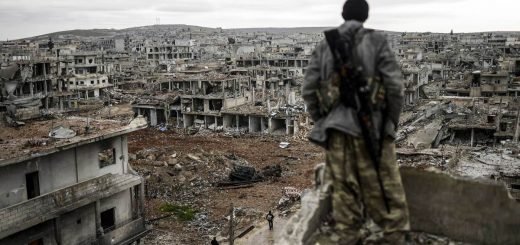Isolation of Gaza Strip: A Large Prison

“Long before the global outbreak of COVID-19 threatened to overwhelm the already devastated healthcare system in Gaza, the UN had predicted the blockaded coastal strip would be unlivable by 2020,” said the online letter was written by 250 global artists and writers, in May this year, in which they appealed to Israel to stop the blockade in Gaza. They added, “With the pandemic, Gaza’s almost two million inhabitants, predominantly refugees, face a mortal threat in the world’s largest open-air prison.”
Since 2007, Israel has imposed a harsh land, sea and air blockade on Gaza, following the takeover by Hamas of the Gaza Strip which pushed Fatah and Palestinian Authority (PA) out of the region. There have been three wars since then between Israel and Gaza, responsible for killing thousands of individuals, mostly Palestinian civilians.
According to United Nations Office for the Coordination of Humanitarian Affairs report, the blockade constitutes a collective punishment for the two million people in the region, and it is a denial of basic human rights, in violation of the international law. It has severely restricted imports and exports the movement of people in and out of Gaza, and access to agricultural land and fishing waters. This has resulted in a severe deterioration in the living conditions, quality of infrastructure and vital services.

Egypt, Gaza’s other neighbour, has also maintained the blockade on goods going into the territory. The enforced isolation by the two neighbouring countries have compelled “Thousands of people, many of them children, risk their lives smuggling goods through the tunnels under the border with Egypt every day. The thriving tunnel industry is a direct result of ongoing restrictions on the import of construction materials, the lack of employment opportunities, and the huge reconstruction needs in Gaza,” according to the report.
By late 2019, the poverty and unemployment rates had both reached 75%, and 70% of the Strip’s residents were food insecure, Gaza’s Civil Affairs Ministry said last year. There is 70% youth unemployment and many graduates have been forced by the circumstances to earn living by cultivating lands. The situation has since worsened with the arrival of the novel coronavirus to the region.
Healthcare and COVID-19
“Well before the ongoing crisis, Gaza’s hospitals were already stretched to breaking point through lack of essential resources denied by Israel’s siege. Its healthcare system could not cope with the thousands of gunshot wounds, leading to many amputations,” stated artists in their online letter.
They continued, “Reports of the first cases of coronavirus in densely populated Gaza are therefore deeply disturbing. We back Amnesty International’s call on all world governments to impose a military embargo on Israel until it fully complies with its obligations under international law.”

Following PA President Mahmoud Abbas’s announcement on 19 May to end all agreements and understandings with Israel and the United States as a result of Israel’s plans to annex more than 30 percent of the occupied West Bank, the work of the Palestinian Civil Affairs Committee (PCAC) was halted, effectively freezing the process granting exit permits to patients from the Gaza Strip.
The healthcare system in Gaza has been overstrained for some time now, as it has suffered from severe shortages of pharmaceuticals and medical equipment.
The suspension of exit permits has jeopardised Gaza patients’ access to West Bank medical facilities, as they must travel through Israel to access the rest of the occupied territories. A large portion of applications are for cancer patients; others require specialized surgeries, diagnostic imaging, cardiology, or other services otherwise unavailable.
The number of confirmed coronavirus cases in the West Bank and Gaza Strip spiked in the second half of June. The total number of COVID-19 cases quadrupled from nearly 700 on 16 June to more than 2,700 as of 30 June, “one of the highest rates of increase reported worldwide during this period,” according to the UN monitoring group OCHA.

Isolation as Default before 2007
Whilst it is popularly believed the blockade in Gaza imposed by Israel has its origins in 2007 as a result of Hamas’ increasing presence, the trend of Israel isolating Gaza dates back three decades.
Sara Roy, a senior research scholar at Harvard University’s Centre for Middle Eastern Studies stated, “The blockade is not an isolated event in Israel’s policy towards Gaza.” She added, “From the beginning of the occupation in 1967, Israeli policy towards Gaza has been shaped by political considerations that deliberately restricted domestic economic development and structural reform in order to preclude the emergence of a Palestinian state. The blockade can be understood as a part of this policy continuum.”
“The current blockade on the Gaza Strip did not begin with Hamas, and if Hamas were to be removed from the equation, it would very likely be the case that Israeli efforts to contain the Gaza Strip would morph into a new form,” Tareq Baconi, an analyst with International Crisis Group described.
It seems that “Movement has become the exception, and the restriction is the rule,” according to Tania Hary, executive director of Israeli human rights NGO Gisha which works to protect the freedom of movement of Palestinians.



















